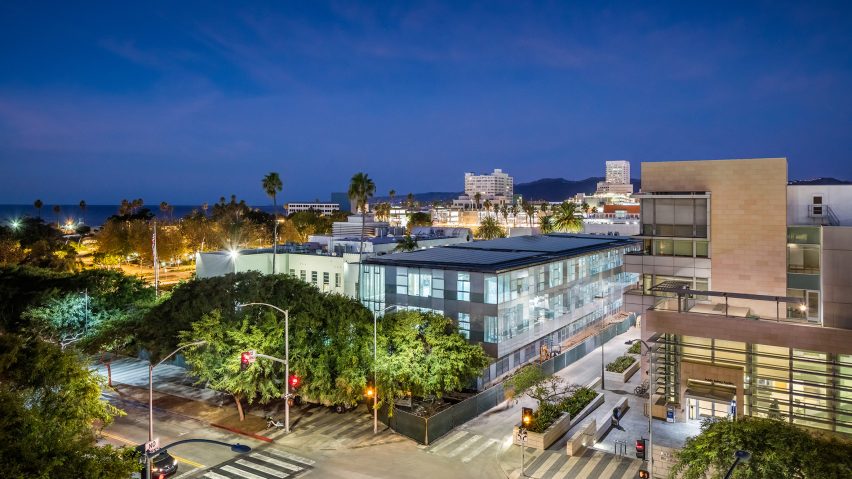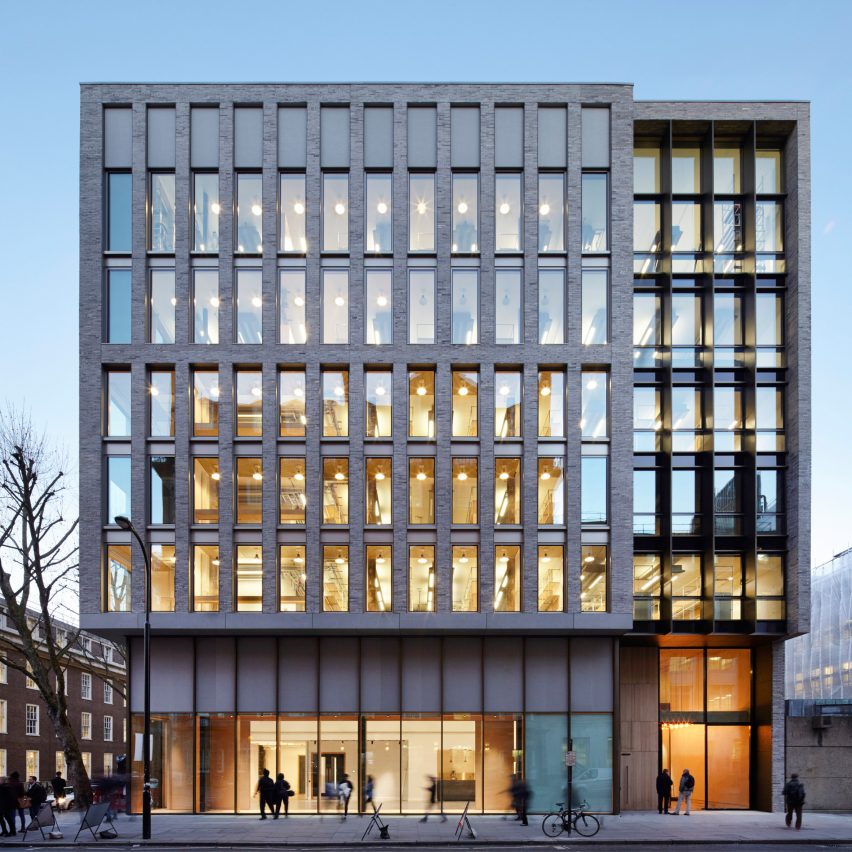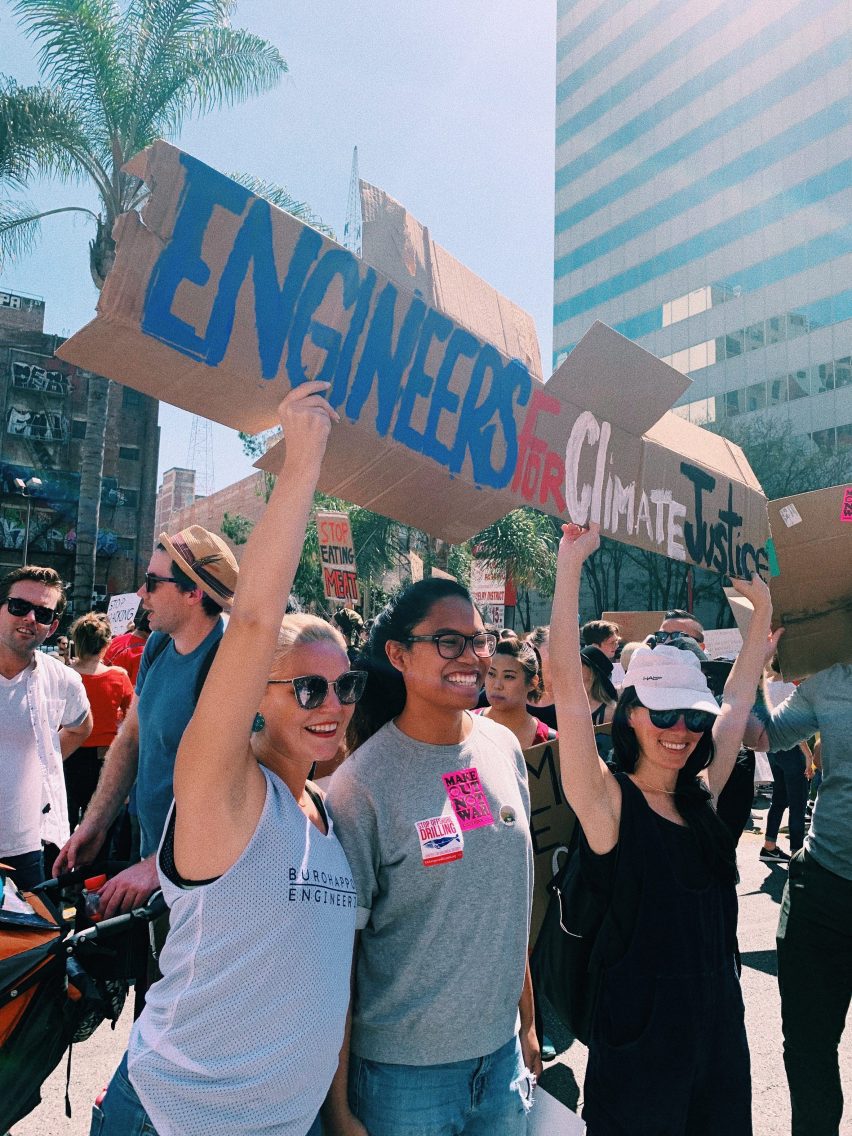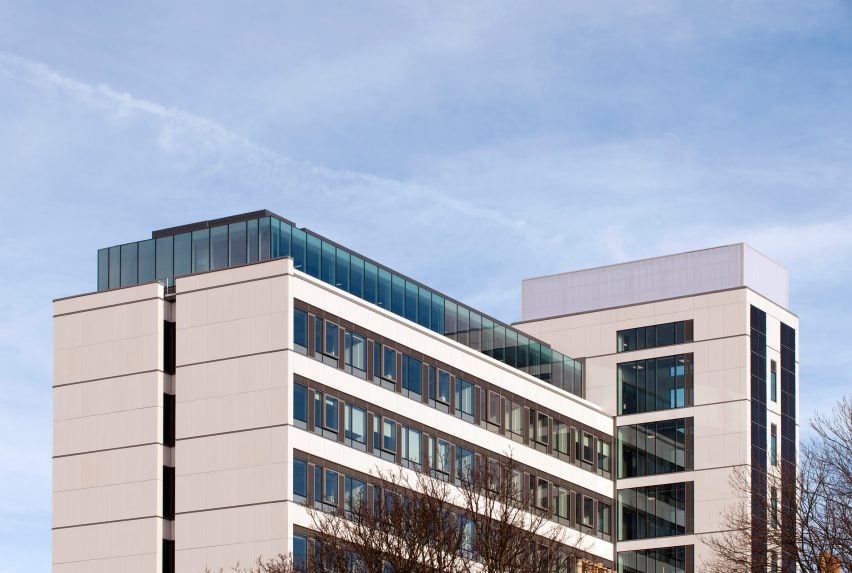
Architects and engineers have "significant potential to impact climate change" says Buro Happold
Dezeen promotion: the intelligence and technologies that architects need to decarbonise the built environment are accessible now and must be utilised, according to engineering consultancy Buro Happold.
Buro Happold said that designers of the built environment must urgently "decarbonise our buildings, infrastructure and energy supply" in order to help alleviate climate change.
The built environment is currently one of the biggest contributors to the changing climate, responsible for approximately 40 per cent of all greenhouse gas emissions.
"This past year has made apparent how communities globally are being deeply harmed by climate change, at a rapidly increasing rate," Buro Happold said.
"We have the intelligence and the technologies necessary to correct this now," the consultancy continued.
"As designers of the built environment, we have significant potential to impact climate change, and it is our responsibility to fully utilise that potential."

Architects must tackle whole-life carbon
Decarbonisation is the process of reducing or removing the carbon dioxide emissions from a particular output, such as a building or country.
According to the consultancy, in the built environment, this requires minimising the "whole-life carbon" of buildings – meaning both their embodied energy and operational energy.
However, Buro Happold said that efforts to minimise embodied energy – the emissions caused by the manufacturing, construction, maintenance and demolition of buildings – are rarely considered in the design process.

"It must be continuously recognised that the best method to avoid emitting embodied carbon is to make the best use of our existing building stock and reusing existing materials," Buro Happold explained.
"When new materials cannot be avoided, designers must prioritise specification of products and materials that have third-party verified Environmental Product Declarations, which disclose the amount of embodied carbon emitted in the manufacturing of the product," the consultancy continued.
"Embodied carbon needs to be considered a key criterion in material selection processes. We cannot afford to be complacent with this."
To help architects quantify the embodied carbon of their buildings and in turn minimise their whole-life carbon, Buro Happold has launched the BHoM LCA-Toolkit.
BHoM LCA-Toolkit is a life cycle assessment tool that helps architects calculate the whole-life carbon their building proposal could emit. It can also help architects better understand the amount of embodied carbon associated with both existing buildings and new construction.
"Decarbonisation will not be achieved working in silos"
Collaboration between different countries and policymakers in this way is critical if the built environment is to decarbonise, the consultancy said.
"In many climates, decarbonisation is already possible, and in others, the technologies are still emerging."
"Full decarbonisation will not be achieved working in silos, we must engage research institutions to jointly explore emerging technologies, manufacturers to develop necessary equipment, and policymakers to facilitate the use of such technologies."

Architects must design for "new normal"
However, alongside decarbonising the built environment, Buro Happold added that it is also time to prioritise designing built environments that are resilient to the effects of a changing climate.
Protecting people from extreme weather events such as flooding and storms should be the core driver for design decisions across the world, Buro Happold said.
"The past year has shown us that the standards we must design have changed," the consultancy continued.
"Even if all current Paris agreement climate pledges are met, the world is expected to experience temperatures rising by about 2.4 degrees Celsius by the end of the century."
"We have reached the point where we must not only continue to fight climate change, but we must accept our new normal of natural disasters occurring at a frequency that is continuously increasing."
An example of this is Buro Happold's Los Angeles County Climate Vulnerability Assessment.
The project identifies "the people, systems, infrastructure, and places that are most vulnerable to the increasing impacts of climate change" in the County of Los Angeles and its 88 cities and is intended to help it prepare for the increasing impacts of climate change.
Find out more about Buro Happold's work by visiting its net zero carbon buildings or climate change adaptation and resilience consultancy services pages.
Top photo is the Santa Monica City Hall by Alex Nye.
Partnership content
This article was written by Dezeen for Buro Happold as part of a partnership. Find out more about Dezeen partnership content here.